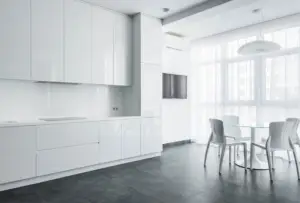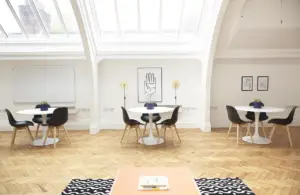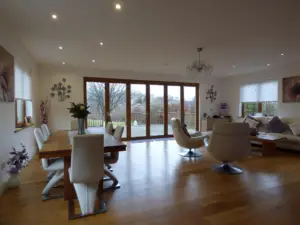By Gorge House/11,Aug,2025
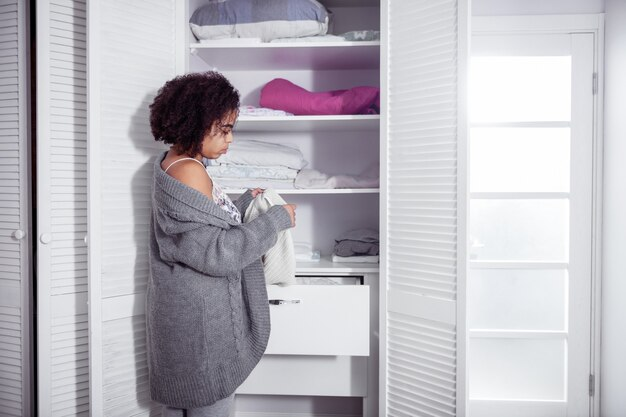
Nothing beats a well-arranged wardrobe. This is because a wardrobe is far more than just a place to store clothes. It is where your day begins and the guardian and protector of your personal style.
A wardrobe often decides whether you will have a stressful morning or a smooth one. But there are many details that people don’t think about until they cause problems, and one of them is closet depth.
Wardrobe closet depth determines whether your hangers move easily or get stuck, whether your shoes remain in sight or disappear, and whether your space feels messy or neat.
If the depth is wrong, you will end up with doors that won’t close and shelves that are too deep, hiding your belongings. But when the depth is right, your closet becomes a well-organized and easy-to-use space where everything is easily accessible.
In this guide, we’ll cover the best depths for different closet types, the factors that influence them, and the innovative solutions to make any space work better. By the end, you will know the standard depth for your closet and why it can change how you use it entirely.
Understanding Standard Closet Depth Basics
Closet depth is the measurement from the back wall to the front opening inside the closet. This number determines how easy it is to hang clothes without crushing them, place the items neatly, or reach the shelves you need.
Meanwhile, closet depth is far more than just a size; it is what differentiates the space you can use and the space you cannot. If the closet is too deep, things will always get lost and will be forgotten.
The kind of closet you have, whether it is a walk-in, reach-in, or a sliding door, also changes how deep it should be. A walk-in closet gives you spaces to move around, a reach-in closet needs to make the best use of limited space, and a sliding door closet needs enough space for the door to open without hitting anything inside.
Standard Closet Depth Measurements
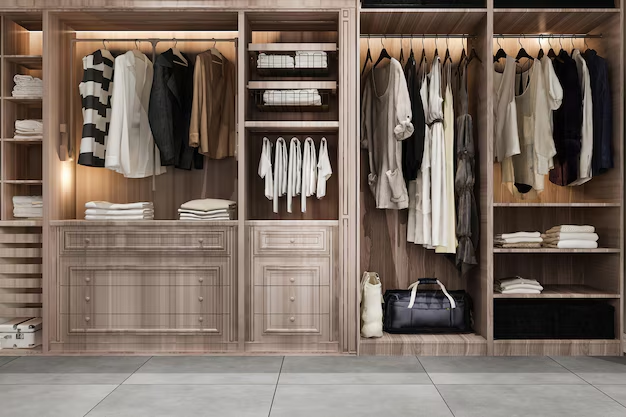
When planning or renovating a closet, the depth is one of the most important dimensions to get right. Closet depth determines whether clothes can hang freely without wrinkling, whether doors can open fully, and how much storage you can fit without making the space cramped.
| Closet Type | Minimum Depth | Recommended Depth | Best For | Notes |
| Reach-In Closet | 20 in (51 cm) | 24 in (61 cm) | Bedrooms, hallways | Ideal for one row of hanging clothes; 24 inches prevents wrinkling. |
| Walk-In Closet | 48 in (122 cm) | 60–72 in (152–183 cm) | Master bedrooms | Allows storage on both sides with a walking path in the middle. |
| Wardrobe/Armoire | 18 in (46 cm) | 24 in (61 cm) | Rooms without built-in closets | Depth may vary based on style; sliding doors save space. |
| Children’s Closet | 12 in (30 cm) | 18 in (46 cm) | Kids’ bedrooms | Adjustable shelves and rods help adapt to growth. |
Factors That Influence Closet Depth
Choosing the right closet depth isn’t just about following standard measurements; it also depends on your clothing habits, room design, and storage needs. Here are the main factors that can affect how deep your closet should be:
1. Types of Clothing
Not all clothes make use of the same amount of space. Some clothes need a large amount of space. While lighter clothes like shirts, blouses, and t-shirts can fit into smaller spaces, winter coats, long flowing dresses, and heavy jackets need more space to avoid wrinkles. If you have both, choose a depth that can hold the bigger items perfectly without taking away space from the smaller ones.
2. Door style
The openness of your closet makes a big difference in how deep it should be. Sliding doors do not need space to open in an outward position; they do need room for the tracks and enough clearance so they do not scrape against the hangers and clothes. Hinged doors open outward, so you need to leave enough space in the room for them to open fully without hitting the wall or the furniture. Picking the right door style helps you keep your closet easy to use while making the most of your door space.
3. Room layout
What matters more is the size and shape of the room around your closet. In a small room or on a very short wall, a deep closet can make the space feel so tight. In an extra-large room, you can go deeper without feeling cramped or lacking space. Make sure you think about how the closet will fit into the overall movement of your room before deciding on the depth.
4. Extra storage features
A closet can be of more use with built-in organizers, drawers, pull-out baskets, and shoe racks, but they also need enough space to work correctly. Drawers should have more space to pull out entirely. Pull-out baskets and shelves need extra space to slide without sticking. Shoe racks need more room so that they can lean or slide without hitting other items. Though these features are worth adding, it is best to plan for them when deciding on the depth.
How to Measure Your Closet Depth Accurately
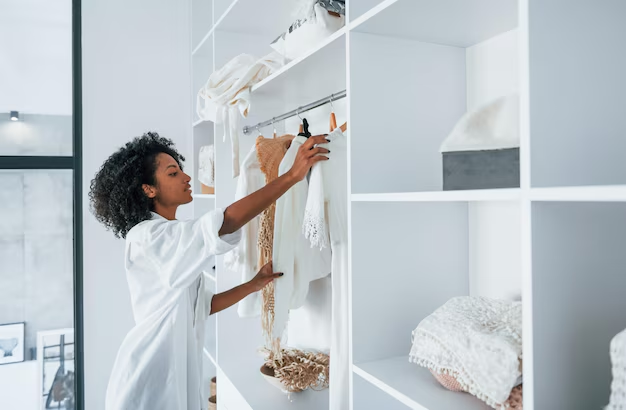
Your closet depth measurement is much easier than you might think. Here’s a simple step-by-step guide, also with the tools you will need for the measurement to be accurate.
What you need:
● Tape measure
● pencil.
● Notebook or any paper.
Step 1: Measure the inside space
Begin by measuring the distance from the back wall straight to the inside front of the edge of your closet. This will give you the accurate depth you have to work with.
Step 2: Understand the internal and the external
Internal depth is the space inside the walls of the closet, while external depth includes the closet frame, doors, and trims. Make sure you know the actual measurement needed for your closet.
Step 3: Don’t forget Doors, Trims, and Ventilation
If your closet has a door trim, molding, or overhang, measure how far these will stick into the space. Also, take into account any vents or openings that might affect the actual depth.
Follow these provided steps, and it will help you get the most accurate measurement so your closet will work perfectly for your needs.
Space Optimization Tips for Different Closet Depths
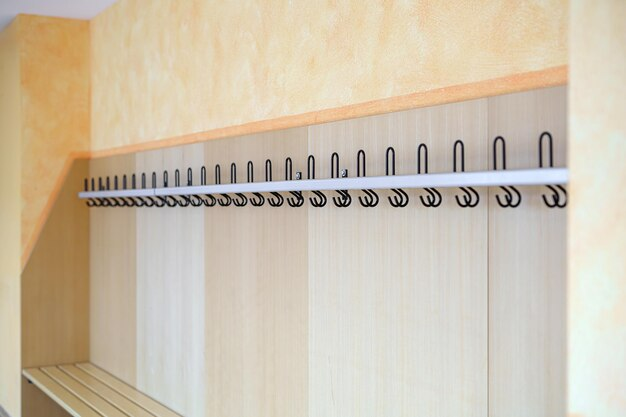
Not every closet has the same depth, but regardless of size, you can maximize functionality with smart storage strategies. The key is tailoring your organization system to your closet’s dimensions. The following are the key tips to optimize your closets:
1. Shallow closets
make sure to choose slim, non-slip hangers to save space of about half an inch. Use the advantage of vertical storage by piling boxes or adding shelves. Over the door organizers are excellent for keeping your shoes, scarves, and all accessories easy to locate and use.
2. Deep closets
Install double hanging rods; hang shirts on the top of the rod and pants or skirts below, to make use of the space more efficiently. Pull-out shelves and storage bins help in keeping items at the back easy to see and easy to reach.
3. Lighting:
Adding motion-activated lights, strips, or fixtures will make it very easy to see everything, especially in deep closets.
Common Closet Depth Mistakes to Avoid
Even with the right measurements, certain design oversights can make a closet feel cramped or inefficient. Avoid these common pitfalls to ensure your closet is both functional and comfortable to use:
1. Not considering the hanger size
Choosing a closet depth without considering the size of your hangers is one of the biggest mistakes. Hangers can get stuck, clothes may get crushed against the walls, or the door of the closet may be too tight. This will, however, lead to wrinkled clothes and a frustrating daily routine. Make sure to always measure your hangers and make sure there’s enough space for them to hang freely.
2. Ignoring door clearance
Another very common error is forgetting to leave enough space for doors to slide or open properly without any hindrance. Hinged doors need enough space to open without hitting the furniture or the walls, while sliding doors require no space to open; they need room for the rail and ample space to prevent sliding against hangers or clothes. Picking the right door style helps you keep your closet very easy to use while making the best of your floor space.
3. Overfilling without organization systems
Deep closets always have plenty of space, but filling them up without much organization can turn that benefit into a big problem. Items get pushed back and forgotten without shelves, pull-out baskets, or bins. This creates a mess, making it difficult to find what you need, and wasting a lot of valuable storage space. Adding smart storage solutions keeps everything easy to see and accessible.
Conclusion
You can avoid common mistakes and make the best of your space by understanding the different types of closets and by knowing your clothing and storage needs.
Choosing the right depth is key to creating a space that will work for you every day.
Closet depth affects how you hang your clothes, how satisfying it is to find what you need at the right time, and how organized your closet will be. With the actual measurements and smart solutions, your closet can go from zero to a hundred and give you an easier and better way to start each day.
Book your in-home consultation with George Group to create a closet that not only stores your belongings but also enhances your home and lifestyle!

